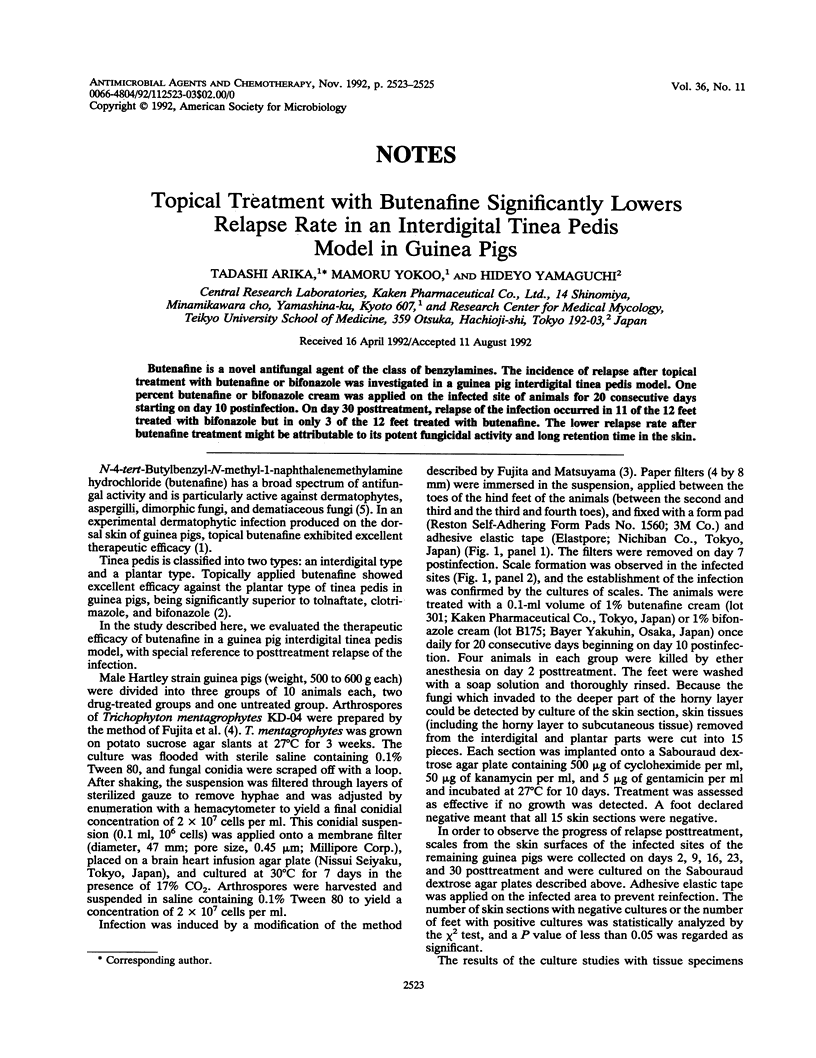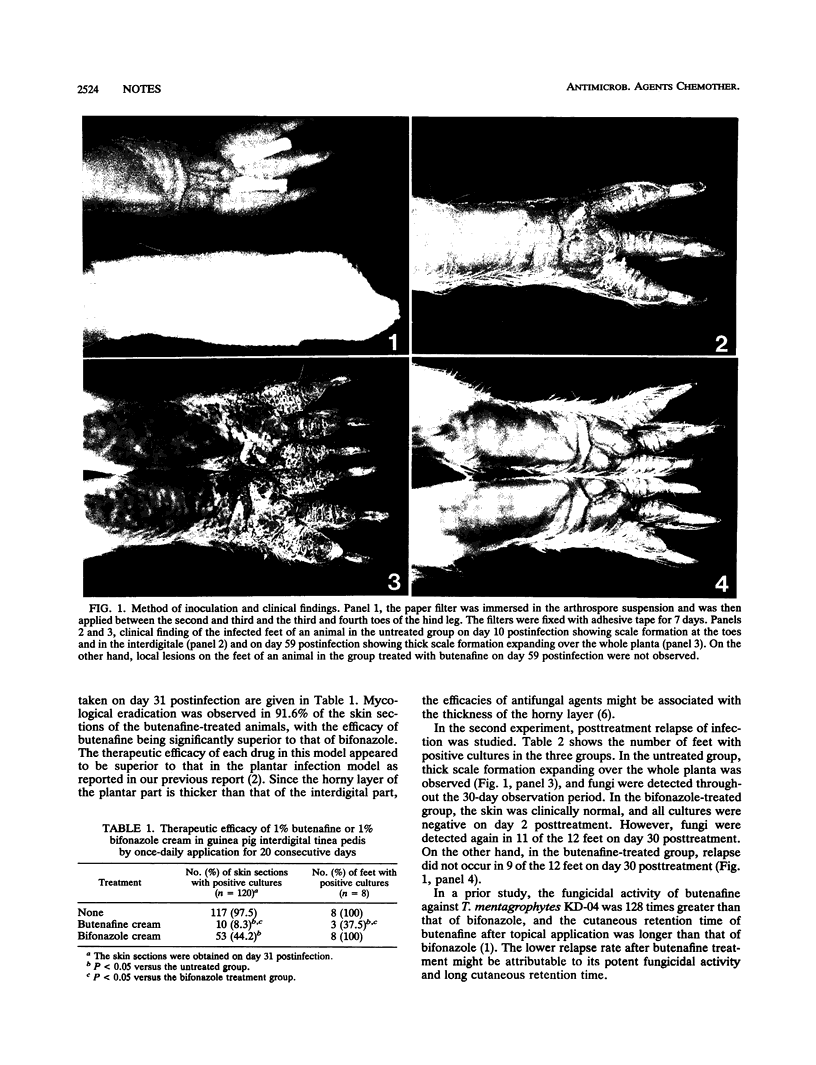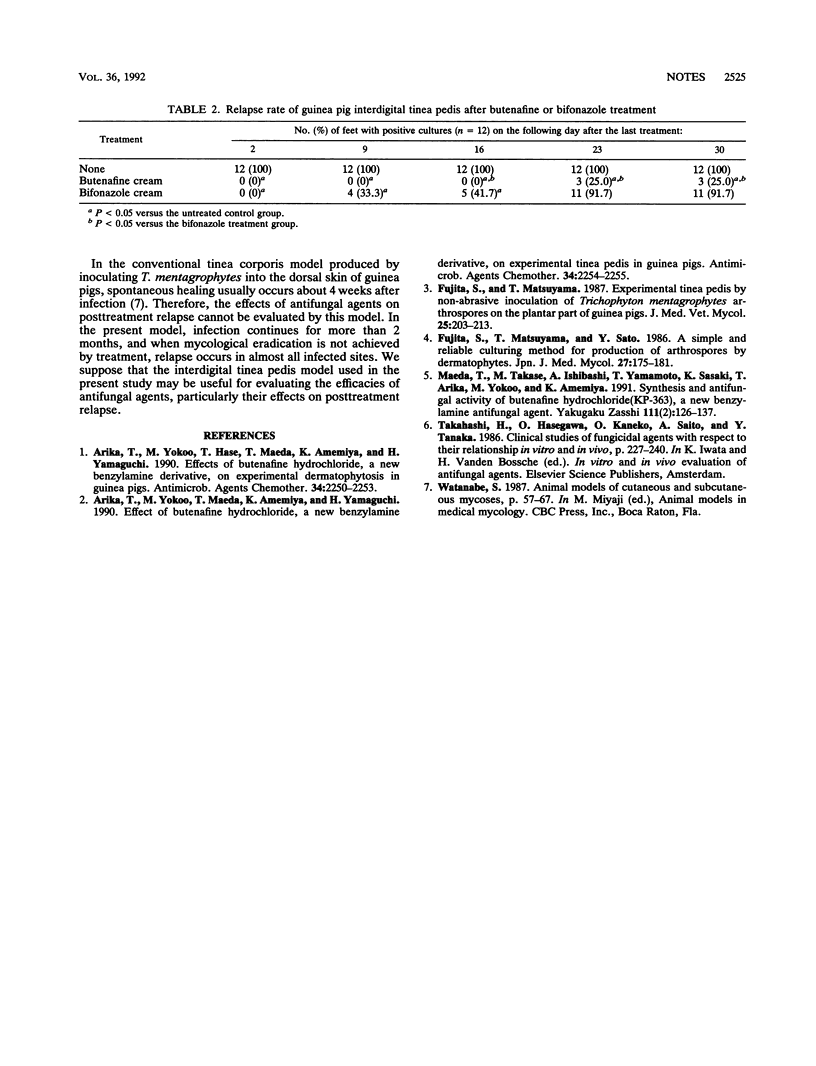Abstract
Butenafine is a novel antifungal agent of the class of benzylamines. The incidence of relapse after topical treatment with butenafine or bifonazole was investigated in a guinea pig interdigital tinea pedis model. One percent butenafine or bifonazole cream was applied on the infected site of animals for 20 consecutive days starting on day 10 postinfection. On day 30 posttreatment, relapse of the infection occurred in 11 of the 12 feet treated with bifonazole but in only 3 of the 12 feet treated with butenafine. The lower relapse rate after butenafine treatment might be attributable to its potent fungicidal activity and long retention time in the skin.
Full text
PDF


Images in this article
Selected References
These references are in PubMed. This may not be the complete list of references from this article.
- Arika T., Yokoo M., Hase T., Maeda T., Amemiya K., Yamaguchi H. Effects of butenafine hydrochloride, a new benzylamine derivative, on experimental dermatophytosis in guinea pigs. Antimicrob Agents Chemother. 1990 Nov;34(11):2250–2253. doi: 10.1128/aac.34.11.2250. [DOI] [PMC free article] [PubMed] [Google Scholar]
- Arika T., Yokoo M., Maeda T., Amemiya K., Yamaguchi H. Effects of butenafine hydrochloride, a new benzylamine derivative, on experimental tinea pedis in guinea pigs. Antimicrob Agents Chemother. 1990 Nov;34(11):2254–2255. doi: 10.1128/aac.34.11.2254. [DOI] [PMC free article] [PubMed] [Google Scholar]
- Fujita S., Matsuyama T. Experimental tinea pedis induced by non-abrasive inoculation of Trichophyton mentagrophytes arthrospores on the plantar part of a guinea pig foot. J Med Vet Mycol. 1987 Aug;25(4):203–213. doi: 10.1080/02681218780000541. [DOI] [PubMed] [Google Scholar]
- Maeda T., Takase M., Ishibashi A., Yamamoto T., Sasaki K., Arika T., Yokoo M., Amemiya K. [Synthesis and antifungal activity of butenafine hydrochloride (KP-363), a new benzylamine antifungal agent]. Yakugaku Zasshi. 1991 Feb;111(2):126–137. doi: 10.1248/yakushi1947.111.2_126. [DOI] [PubMed] [Google Scholar]



